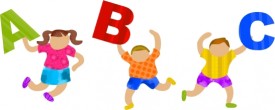
Let’s talk about phonics teaching. Actually, let’s talk about phonics practice.Together, let’s figure out and share what works. But before we start our quest forward, let’s take a quick look back.
The “Great Debate” between proponents of the whole language and phonics approaches to reading instruction and practice has gone on for decades. Essentially, the discussion comes down to the question of whether early readers should focus on developing an understanding of written language at the letter/sound level (a phonicsapproach) or at the word level (a whole languageapproach). Today, the most widely accepted strategy indicates that phonics instruction and practice represent the most effective methods of reading instruction for K-6 learners; phonics also has proven very effective in helping struggling studentswith learning to read and spell. ( Report of the National Reading Panel: Teaching Children to Read, 2006)
So, what opportunities—systematically speaking—are open to educators to offer phonics practice and instruction to students? The National Reading Panel outlines five different instructional approaches that we can draw upon. Specifically, the report lists them as follows:
- Analogy Phonics—teaching students unfamiliar words by analogy to known words (e.g., recognizing that the rime segment of an unfamiliar word—the part of a syllable used in poetic rhyme—is identical to that of a familiar word, and then blending the known rime with the new word onset, such as reading brick by recognizing that -ick is contained in the known word kick, or reading stump by analogy to jump).
- Analytic Phonics—teaching students to analyze letter-sound relations in previously learned words to avoid pronouncing sounds in isolation.
- Embedded Phonics—teaching students phonics skills by embedding phonics instruction in text reading, a more implicit approach that relies to some extent on incidental learning.
- Phonics through Spelling—teaching students to segment words into phonemes and to select letters for those phonemes (i.e., teaching students to spell words phonemically).
- Synthetic Phonics—teaching students explicitly to convert letters into sounds (phonemes) and then blend the sounds to form recognizable words. ( Ibid.)
Print publishers as well as online curriculum providers have created countless tools to help educators teach phonics as well as offer practice to solidify these lessons. But any practice of these lessons that reinforces and offers further exercise in these five understandings--inside or outside the classroom--has the potential to help students solidify and improve reading skills. Guidelines for teaching phonics systematically can be found on many blogs and websites, including www.TeachingLD.org, where you can find their Current Practice Alerts publication on Phonics Instruction: Go For It! ( http://www.teachingld.org/pdf/alert14.pdf)
In such a discussion of phonics practice, we must make the point that any selection of technology to assist in the process should be thoroughly researched and proven in tests as well as in the field. Speaking specifically about the Fast ForWord® products, multiple studies have shown their effectiveness in building the cognitive skills necessary for reading and writing. They do this through development of memory, attention, processing and sequencing abilities, and by exercising early reading skills including phonics, vocabulary, fluency and comprehension.
That said, finding what works isn’t easy; it takes practice, but it also takes research, adaptation, experimentation and creativity. According to columnist Ruth Bettelheimas quoted recently in USA Today, one of the key elements for effective learning is giving students what she calls “the pleasure of mastery.” Phonics is one of those areas where we can—with the right instructional tools—give students the practice they need to not only achieve success, but deliver that pleasure of mastery to help stoke each student’s fire for learning.

